SUMMARY
This is AI generated summarization, which may have errors. For context, always refer to the full article.
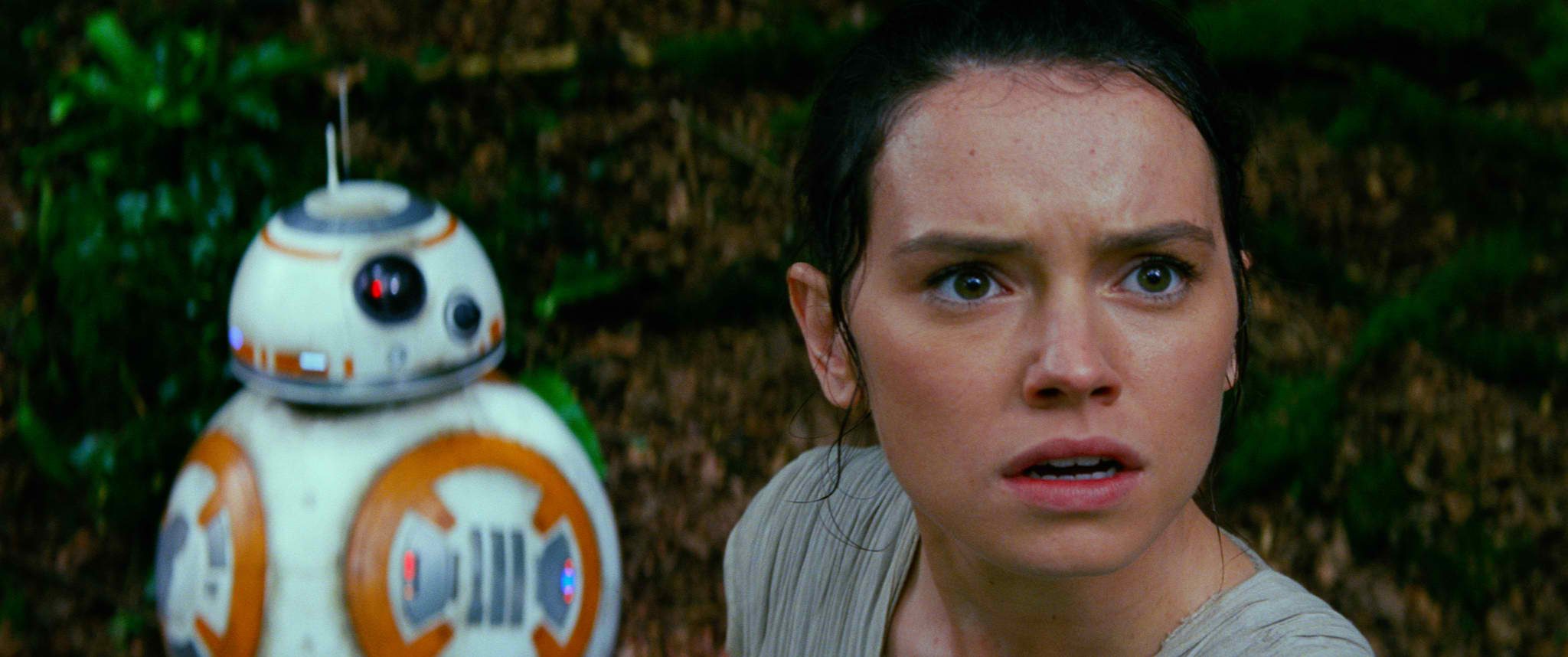
MANILA, Philippines – It is undeniable that George Lucas’ Star Wars (1977) is no longer just a film. It is the germ that not only gave birth to several sequels and spin-offs but also gave rise to a curious cultural phenomenon that has fans walking around public spaces donning outlandish robes while armed with battery-operated lightsabers. READ: The Force finally awakens as ‘Star Wars’ opens in cinemas)
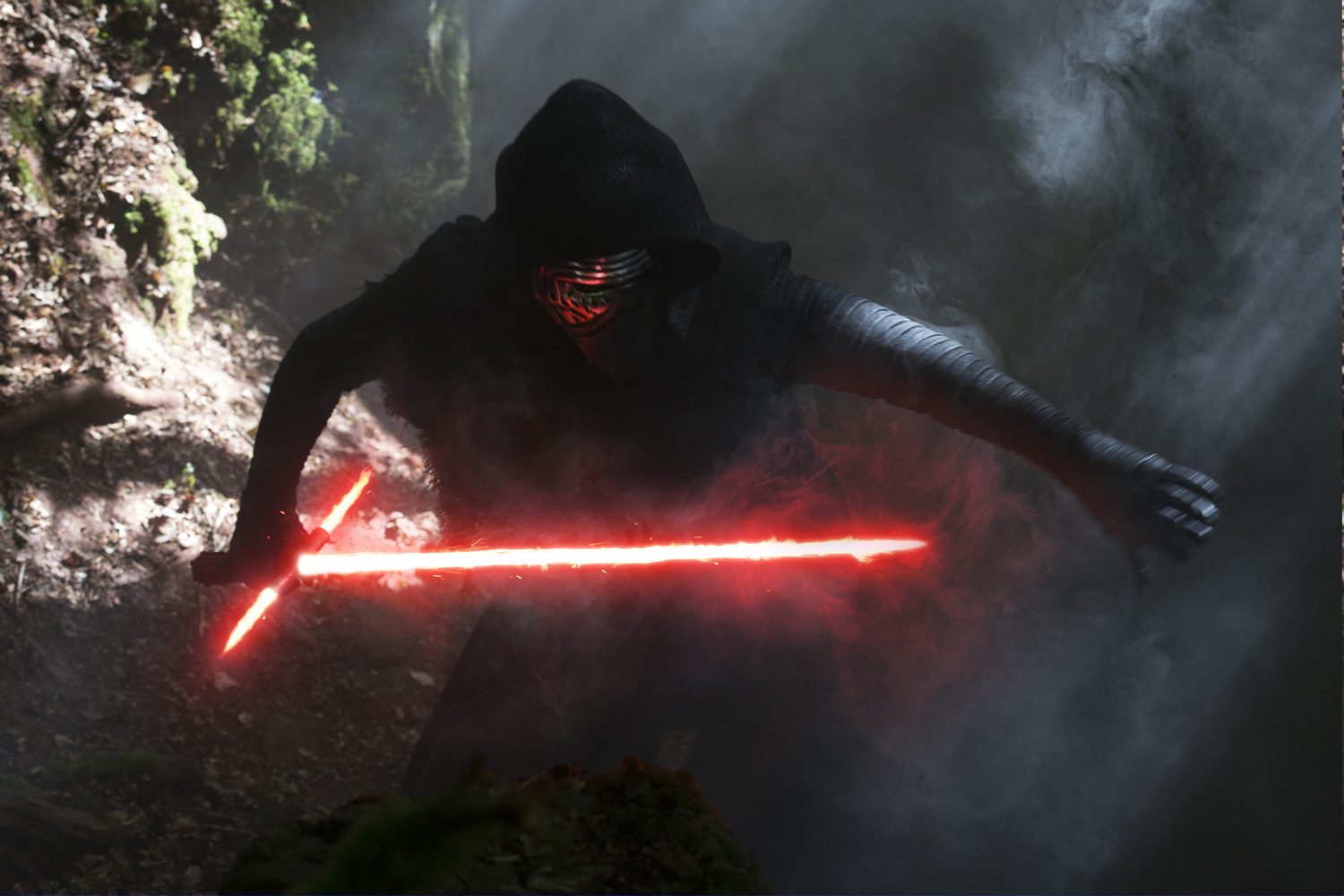
It is actually quite impertinent to even tackle the artistic merits of Lucas’ work because the film has graduated from being just a relic of the decade, from which it was created, into an indisputable statement as to how capitalism has seeped into the very core of humanity’s collective culture. True, Star Wars is no longer just a film; it is a movement – a conglomerate of derivative art, onerous capital, and the inevitability of groupthink in human psychology that erupted into a craze that cannot be stopped by grumpy and lonesome critics. (WATCH: ‘Star Wars: The Force Awakens’ new official trailer released)
This is why despite the abject ridiculousness of Jar Jar Binks, the horrendous prequels of the original trilogy are merely tolerated instead of properly disdained by the general public. This is why despite the glaring fact that The Empire Strikes Back (1980) – the only Star Wars film that is truly worthwhile but was not directed by Lucas – Lucas is still granted a semblance of reverence that is usually reserved for true artists. (READ: When you can watch ‘Star Wars: The Force Awakens’ in PH)
That is quite fine, because that is just how the world has worked.
From here on, you might encounter some spoilers. If you haven’t seen the movie and would like to avoid these, read no further. If you’d like to proceed, click the button below to reveal the rest of the story.
A marriage and a separation
Economically speaking, Star Wars: The Force Awakens is a direct result of the marriage between Disney and Lucasfilm. The publicized merger, which had Disney paying Lucas a lot of money and shares for a company whose primary value is the rights to the Star Wars franchise, gave the studio free rein to do whatever it wants for the sequels. This includes the decision to supplant Lucas’ direction for the property with something new, something fresh, something somewhat unexpected.
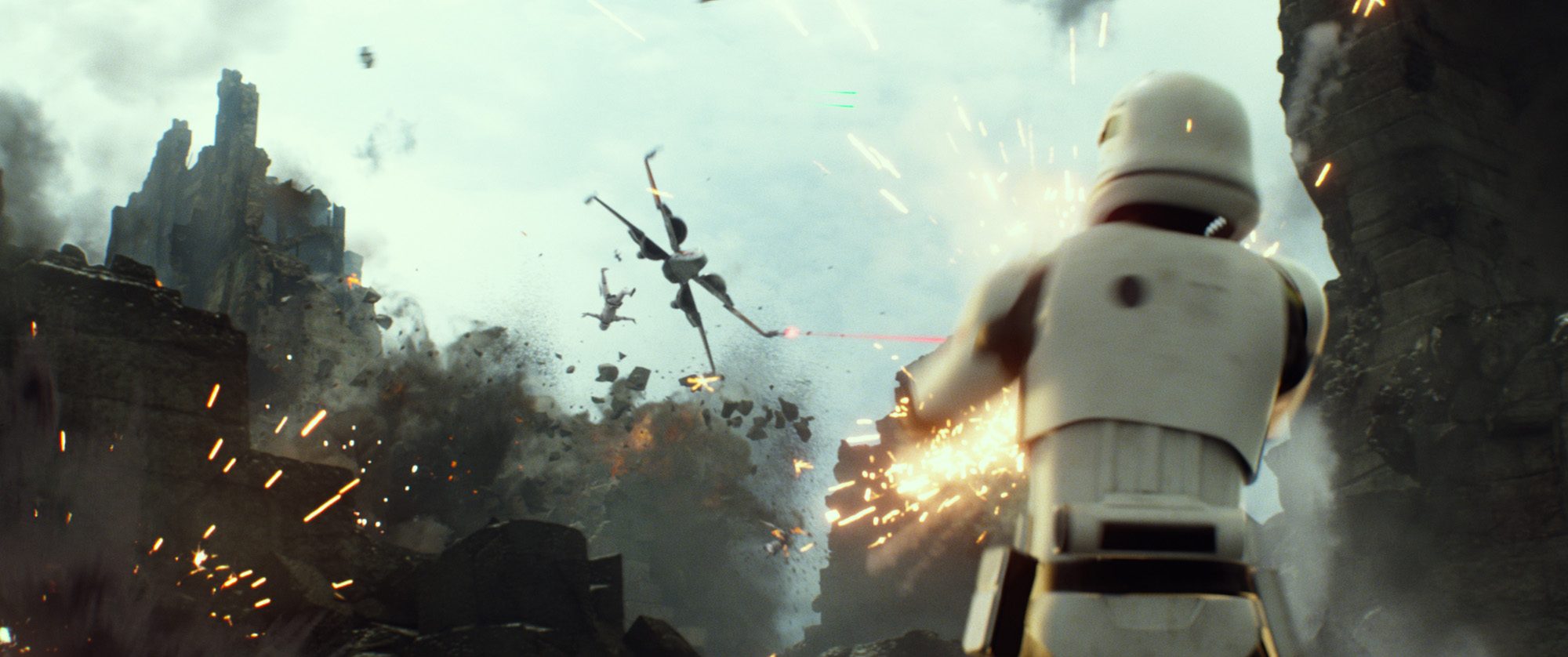
The Force Awakens is written by its director, J.J. Abrams, alongside Lawrence Kasdan, who collaborated with Lucas in The Empire Strikes Back and Return of the Jedi (1983); and Michael Arndt, screenwriter of Little Miss Sunshine (2006) and Toy Story 3 (2010). It frees itself from the collection of literature that was inspired by the films and presents a deviation from all the speculations that have been birthed by the lack of any definitive continuation of the Star Wars saga.
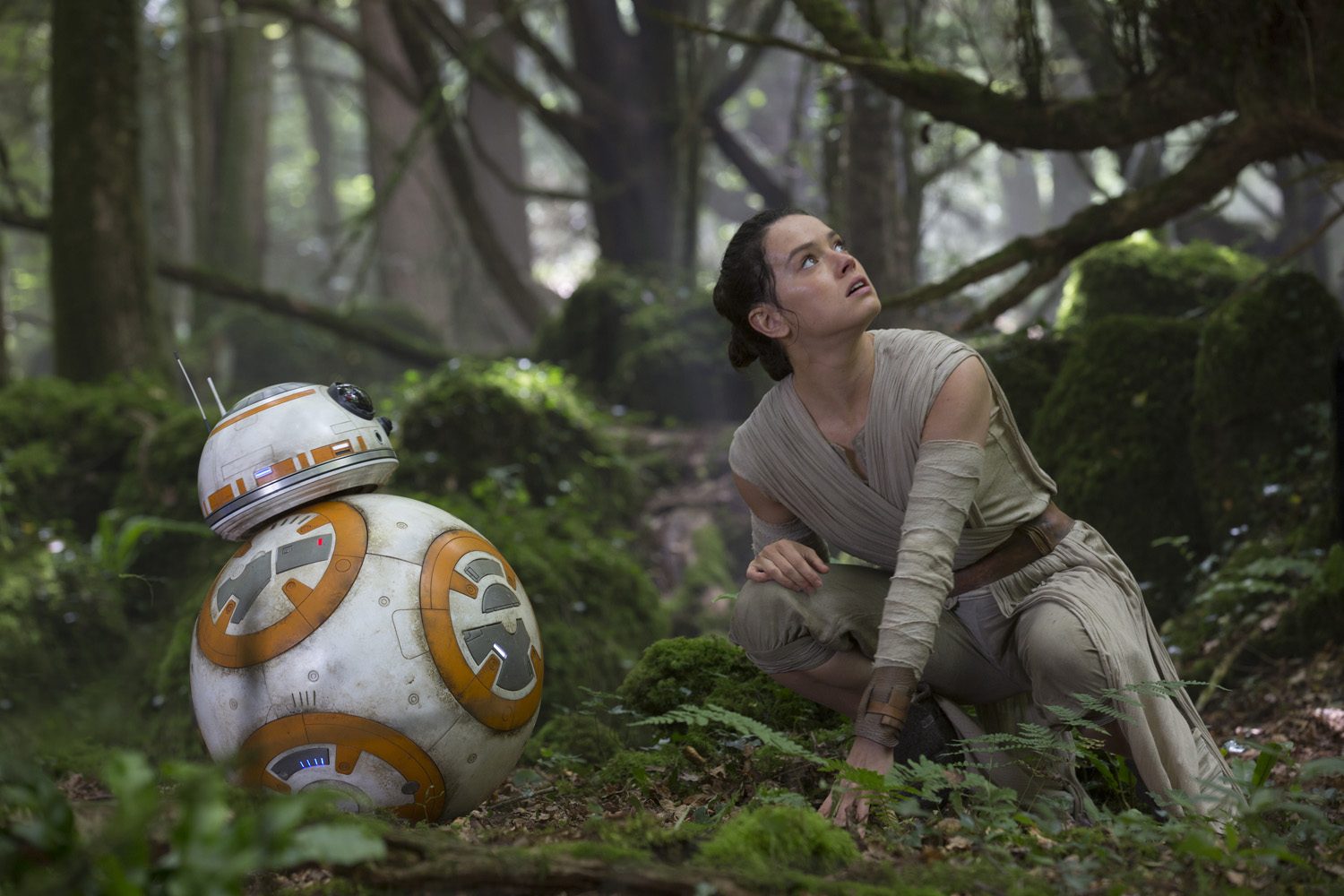
This spiritual separation of the material from Lucas’ original vision paves the way for Abrams to craft an entirely new but not-so-original tale of Rey (a quietly charismatic Daisy Ridley), a scavenger from the desert planet of Jakku, who ends up in the middle of the struggle between the Republic and the Empire-like New Order. Intriguingly, Abrams does not tread novel paths. He acknowledges the simplistic charms of Star Wars and creates a rather uncomplicated story that, like its predecessor, makes most of the primordial tale of the unassuming ordinary person who discovers her true potential and ends up becoming a heroine.
Old but progressive
Abrams, however, ups the ante by infusing the old-fashioned tale with seemingly progressive ideals. The female protagonist is that rare female character who is depicted as undaunted by gender politics. Her visually enthralling introduction, where she is seen scavenging for metal inside the cavernous interiors of an abandoned spaceship, feels like a salute to Hayao Miyazaki’s Nausicaa of the Valley of the Wind (1984).
She is given a vague love interest in the person of Storm Trooper-turned-rebel Finn (John Boyega), but the romance never really blossoms into anything other than a motivation for Finn to remain in her company. Rey maintains the admirable position of being the core and heart of the film, without being categorized as the stereotypical female whose only role is to be swept away by the leading man as she waits for everything to get resolved.
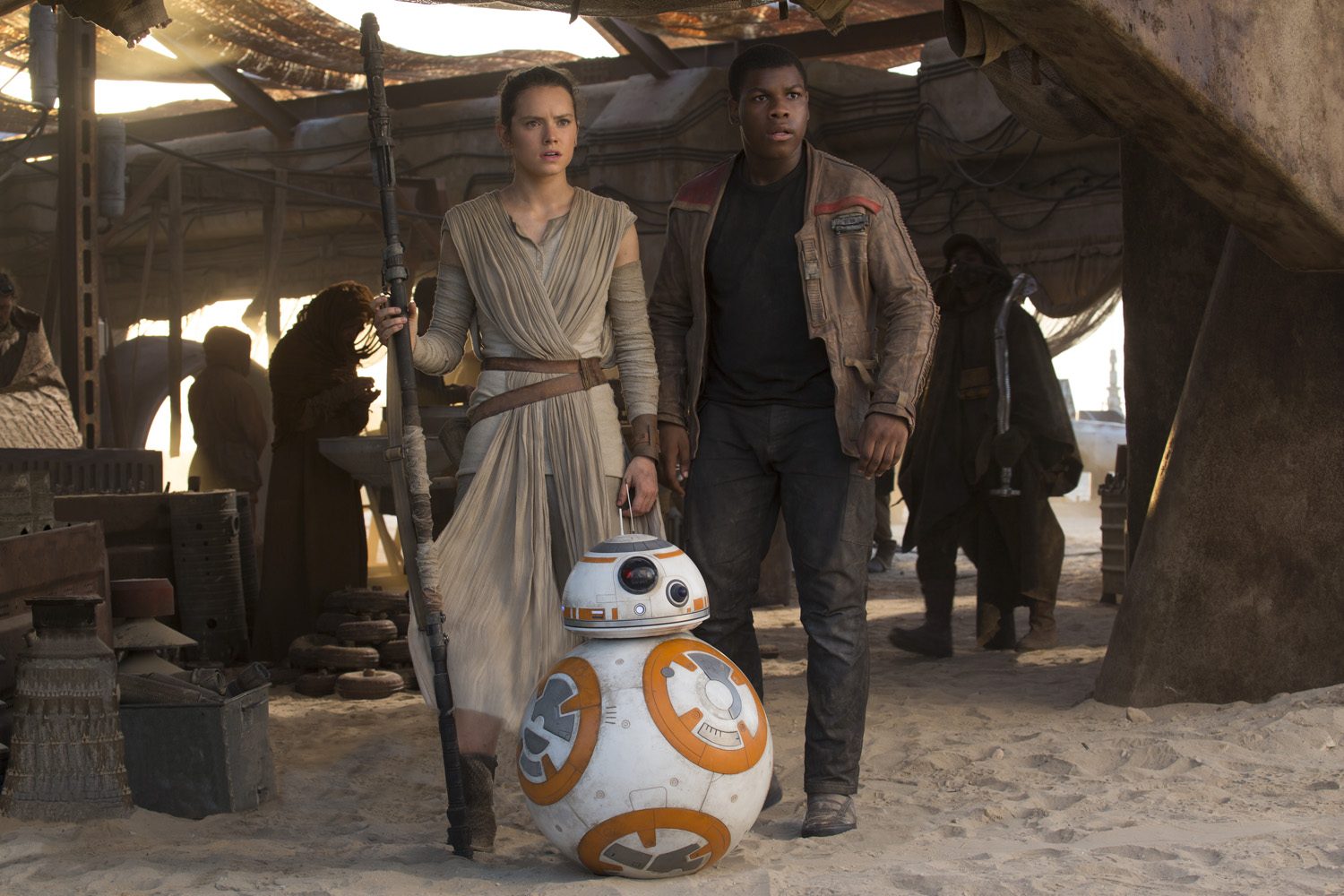
In a way, The Force Awakens quietly cures the errors of all the previous films, with their indiscriminate portrayal of women as either prizes, secondary characters, or swooning sweethearts of some rugged hero. At the same time, the film retains an allegiance to the same elements that have turned the films into the legends that they are.
The Force Awakens is a spectacularly action-packed ride that has its audience jumping from desert to jungle to snowy mountain slopes, while being deeply involved in an outrageously manipulative melodrama that recruits nostalgia and clever wordsmithing for emotional resonance.
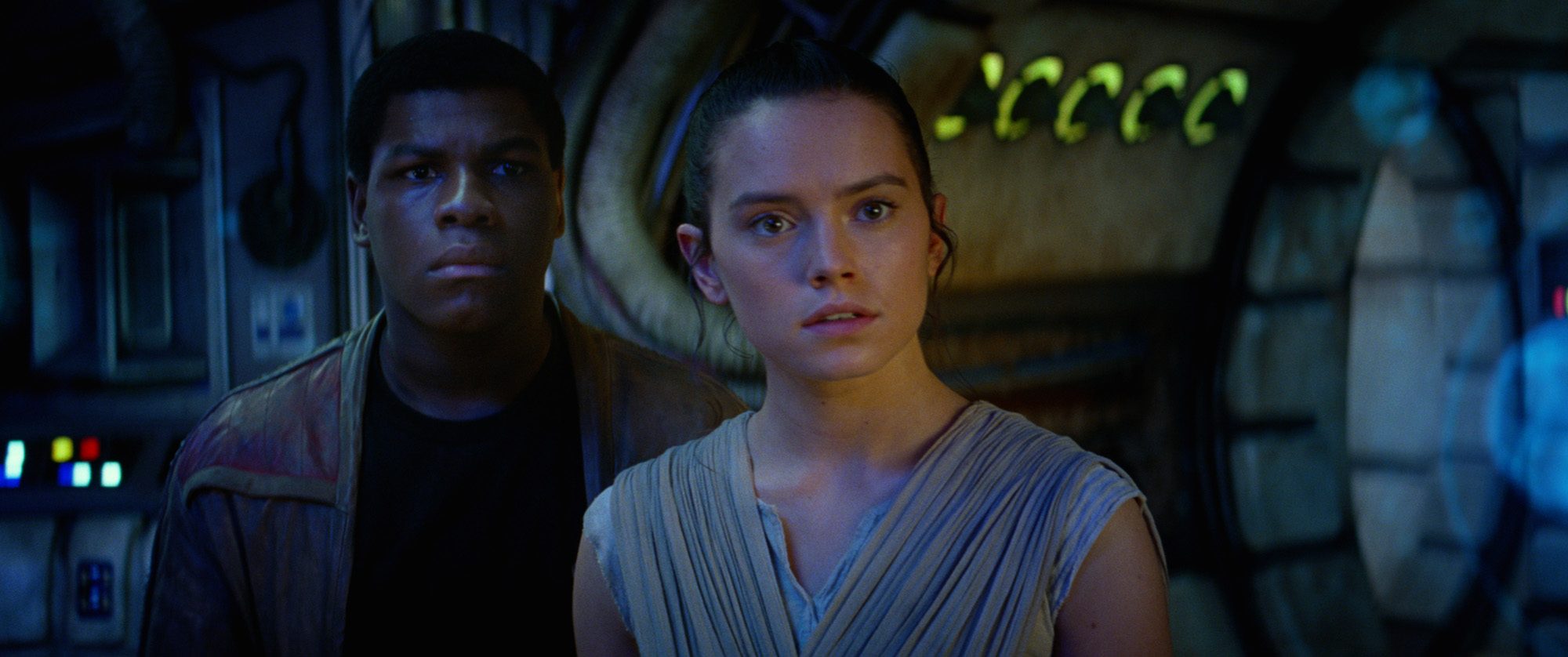
Fan service
There is much to like about The Force Awakens if you are a casual viewer who comes in with scant knowledge of the lore that has the rest of the world hungry for sequels. There is much to love about The Force Awakens if you are part of that world of fans who have been eagerly waiting for the film ever since preproduction rumors.
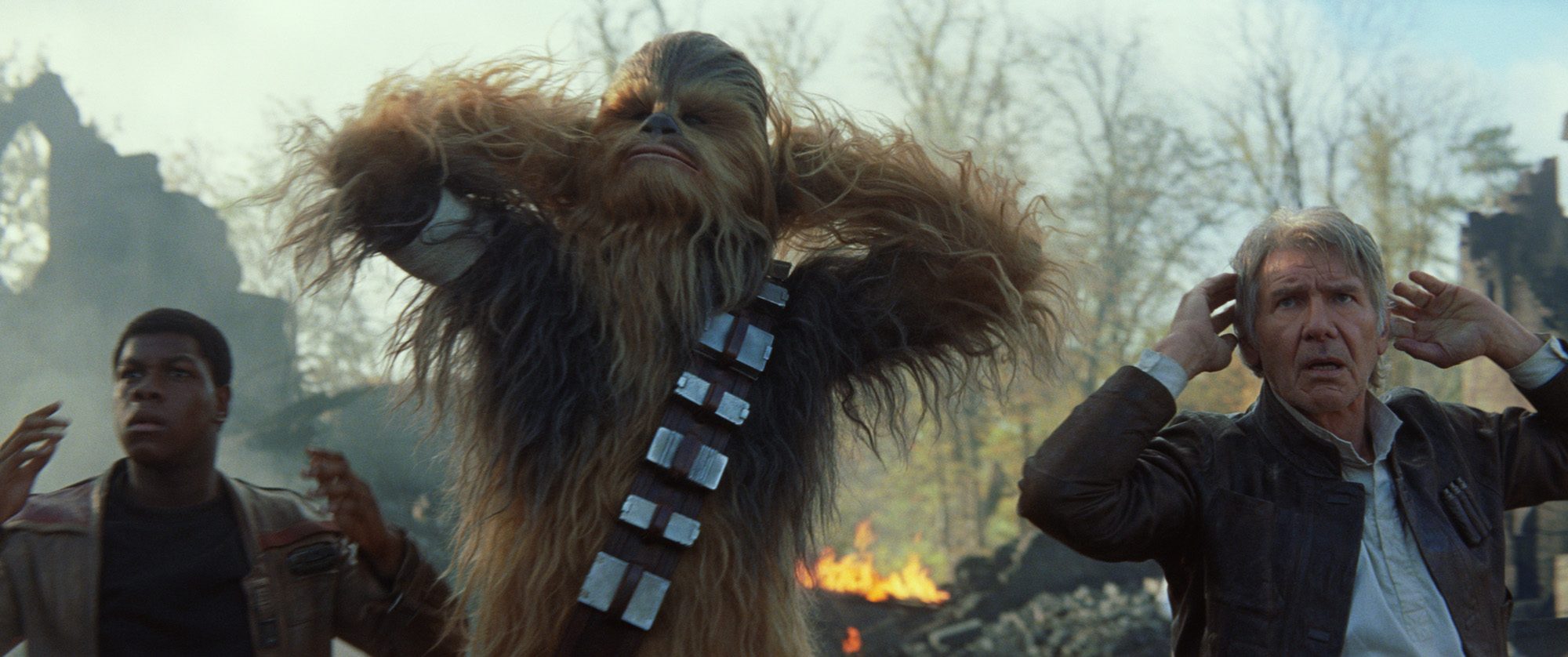
The film’s greatest strength is its ability to recreate something new out of a storyline that is overtly old. In truth, The Force Awakens feels like a reiteration of A New Hope except that it is given heft by the weight of storylines that have been loved for decades. It has old characters, physically aged but suspicously lacking the gravitas of world-weary experiences, unlike Rocky Balboa in Ryan Coogler’s Creed, the more worthwhile seventh entry to a beloved 70s blockbuster.
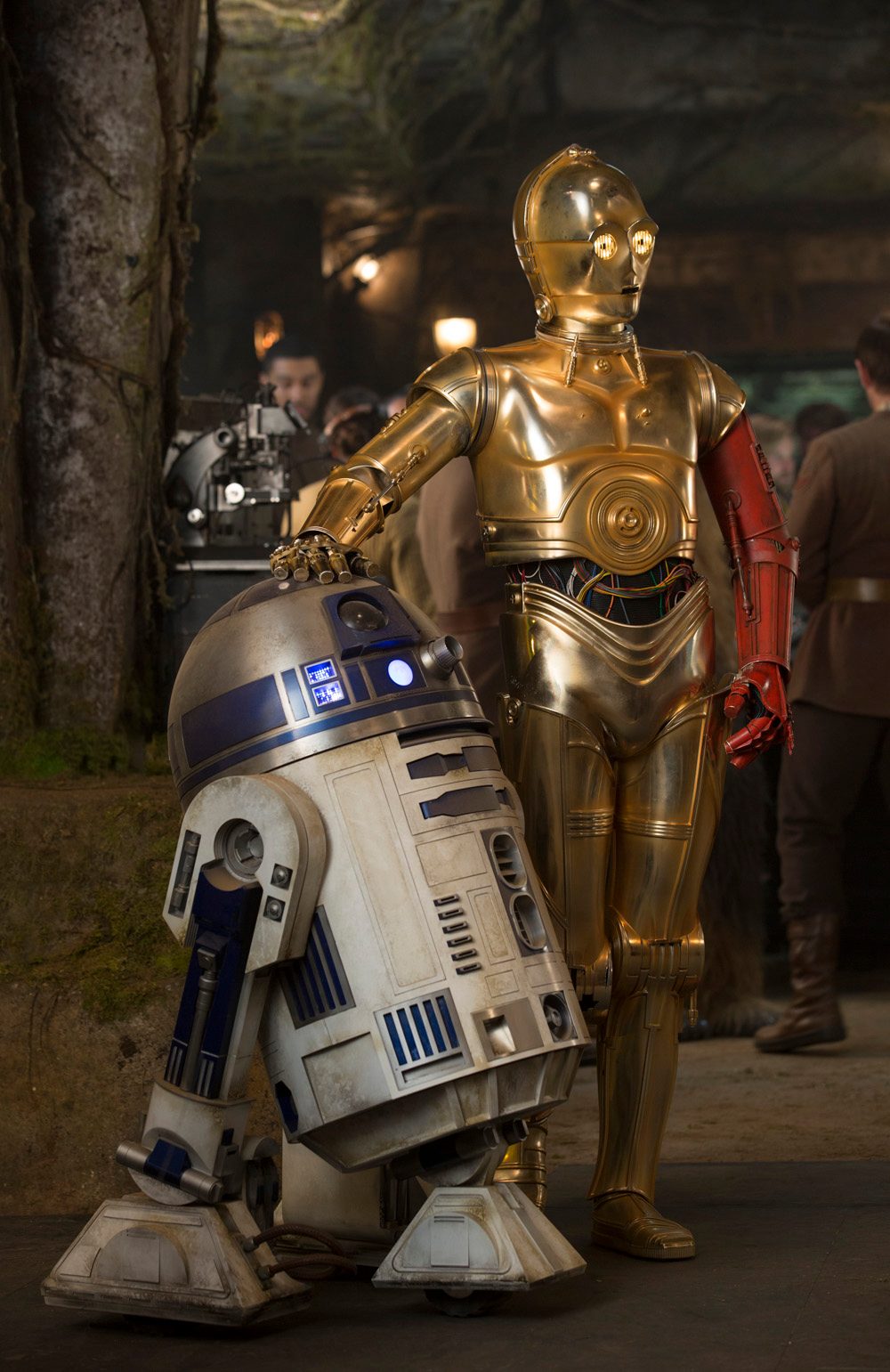
Of course, nostalgia wins. A simple reference would result in cheers and tears. There is nothing wrong with that. In fact, Abrams acknowledges the grave import of looking to the past for support. Just when the film runs out of fuel after spending several minutes in high-speed chases or repetitive blaster fights, it produces a familiar face, whether it be Han Solo (Harrison Ford) or Princess Leia (Carrie Fisher), or any one of the previous’ films famous robots, to restore faith in the film.

The Force Awakens is nowhere near a perfect film. It is hugely entertaining and provides all the spectacles it promises. It is a film borne out of shrewd cleverness. It is smartly unwilling to deviate from the myth and stubbornly places the franchise within the confines of the fantastic world it has always lived in. Sadly, that fantastic world is limited to dreams of childlike wonderment.
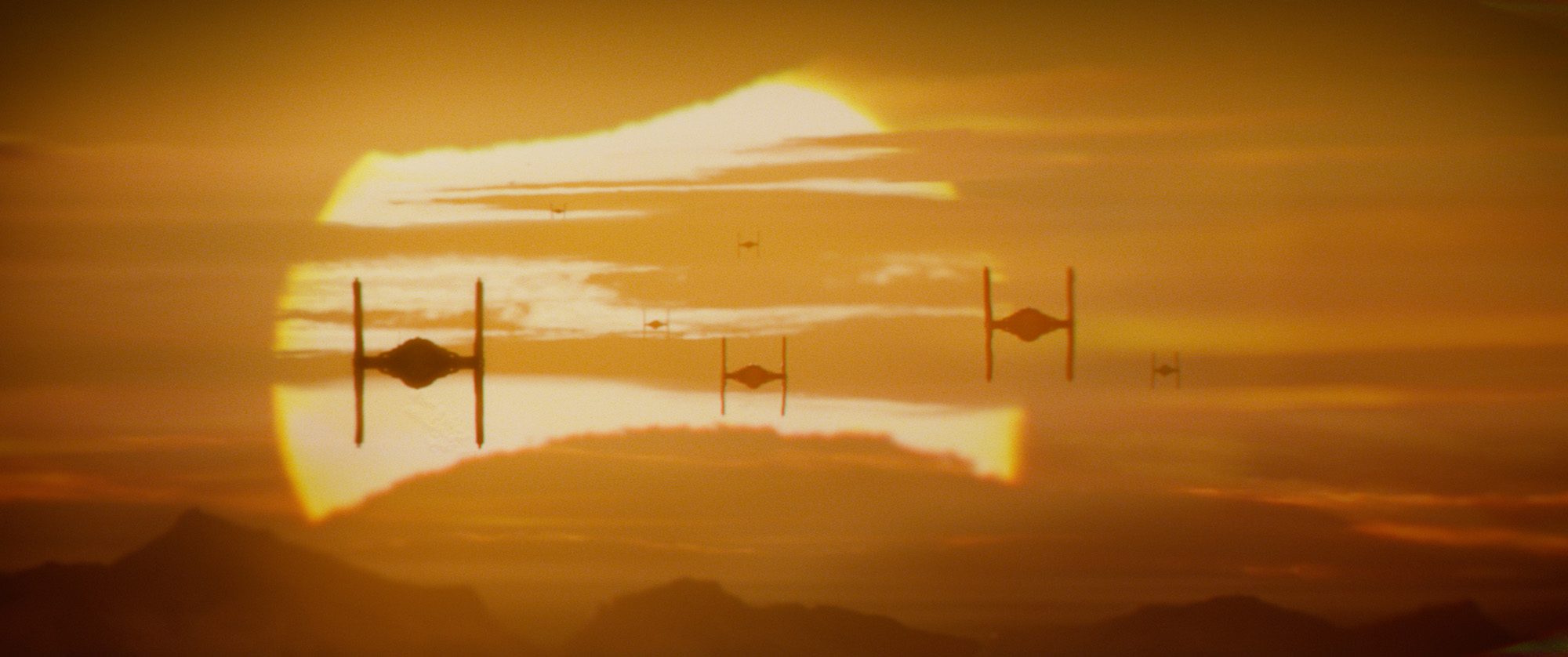
While the film is successful in delivering that momentary escape from the dullness of the real world, its refusal to graduate the material from being a mere space-set melodrama into something else pushes the question: Why do the sequels exist when it seems like the story’s all an extension or a repetition?
Of course, I could be wrong. Either way, Disney wins, Lucas wins, the fans win, and capitalism works. – Rappler.com
 Francis Joseph Cruz litigates for a living and writes about cinema for fun. The first Filipino movie he saw in the theaters was Carlo J. Caparas’ ‘Tirad Pass.’ Since then, he’s been on a mission to find better memories with Philippine cinema. Profile photo by Fatcat Studios
Francis Joseph Cruz litigates for a living and writes about cinema for fun. The first Filipino movie he saw in the theaters was Carlo J. Caparas’ ‘Tirad Pass.’ Since then, he’s been on a mission to find better memories with Philippine cinema. Profile photo by Fatcat Studios
More Star Wars: The Force Awakens here:
- When you can watch ‘Star Wars: The Force Awakens’ in PH
- WATCH: ‘Star Wars: The Force Awakens’ new official trailer released
- 10 tidbits revealed at the ‘Star Wars: The Force Awakens’ panel
- A look at the new ‘Star Wars: The Force Awakens’ toys
- See how ‘Star Wars: The Force Awakens’ stars reacted to new trailer
- WATCH: New ‘Star Wars: The Force Awakens’ TV spot
- WATCH: ‘Inside Out’ emotions react to ‘Star Wars: Force Awakens’ trailer
- WATCH: New ‘Star Wars: Force Awakens’ teaser features Han Solo, Chewie, more
- WATCH: New ‘Star Wars: The Force Awakens’ behind-the-scenes footage
Add a comment
How does this make you feel?
There are no comments yet. Add your comment to start the conversation.